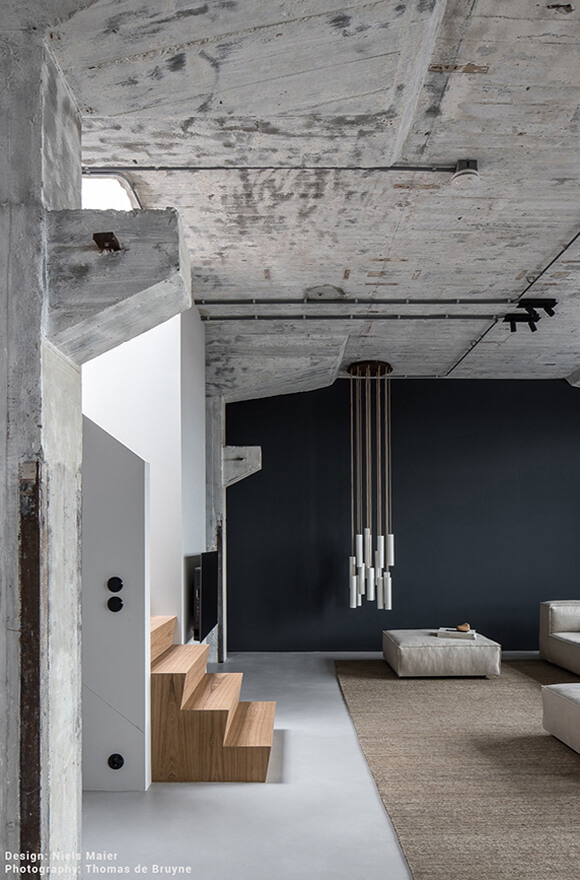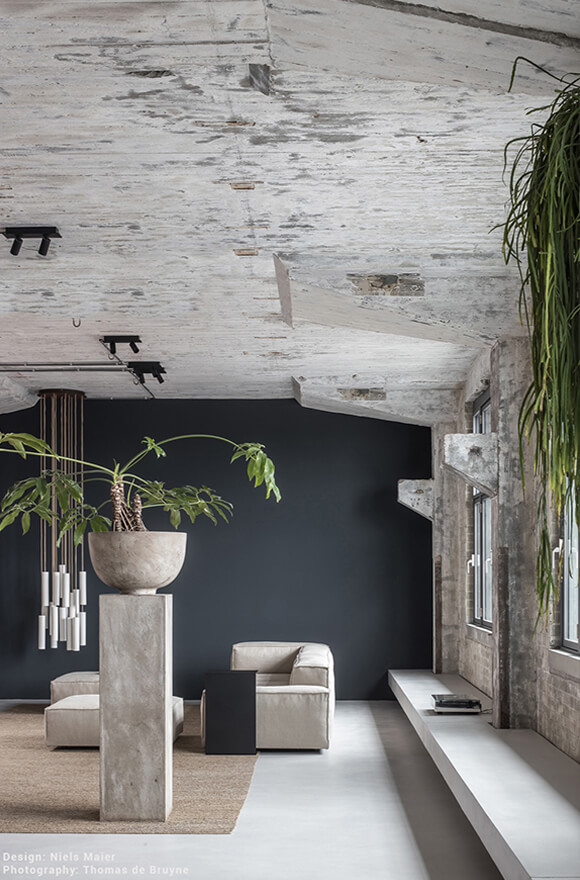Architecture and interior design are experiencing a revolution in which sustainability and living well-being have become central themes and objectives. In such urgent perspective, using natural materials is key, as it brings a number of advantages for the environment and for those who live in the designed spaces — from a reduced dispersion of VOCs into the atmosphere, to energy savings, healthiness and better living quality of spaces.
Furthermore, innovation continues to push boundaries, opening up new possibilities in terms of environmental and health benefits, as well as of natural and recycled materials. Technology comes to play an equally central role in sustainable architecture and interior eco-design, introducing new processing techniques for natural and recycled materials in order to enhance functionality, and performance, and to promote low energy consumption devices.

Natural and recycled materials: environmental sustainability
The current trend towards natural and recycled materials in architecture and interior design represents a significant step towards environmental sustainability. Natural and recycled materials come from renewable sources or from intelligent recycling processes, such as wood from sustainably managed forests, recycled stone, lime, cork, bamboo, glass and metal.
These are all materials that contribute to the conservation of natural resources and for which less energy has been used in production compared to similar synthetic materials, thus reducing greenhouse gas emissions into the environment.
Natural and recycled materials significantly reduce negative ecological impacts and demonstrate a tangible commitment of architecture and design towards a greener and more liveable future, both inside and outside the house. These kinds of solutions are employed by numerous architects and designers from all over the world, such as Stefano Boeri, Neri Oxman, Philippe Starck and Kelly Wearstler – to name just a few, as well as many other professional studios and furniture companies that support projects of different scales and destination. Today, anybody can choose to introduce natural and sustainable materials into their living space.
Natural materials and green solutions: living well-being
Choosing natural materials in architecture and interior design not only reflects a commitment to environmental sustainability, but also represents a direct investment in living well-being. Cork, for example, is an excellent thermo-acoustic insulator for different internal environments, and lime has the ability to regulate humidity and purify the air, reducing the proliferation of bacteria and mould, with a consequent increase in the healthiness of interior environments (to find out more on the topic, go to our article “Benefits of lime in construction”).
Furthermore, materials such as wood, stone and bamboo, thanks to their intrinsic qualities, contribute to creating a welcoming atmosphere in harmony with nature. This allows not only to reduce stress, but also to promote a sense of tranquility in everyday spaces, as numerous studies have shown, starting with those by Stephen R. Kellert.

Innovation for sustainable materials and energy efficiency systems
Innovation in the sector of natural materials is opening new frontiers in sustainable interior design. New processing techniques allow to make the most of the unique characteristics of materials with specific insulating, thermoregulating and hygroscopic properties, such as cork, lime and bamboo for plasters, floors and different types of furniture.
Furthermore, the integration of natural materials and technology represents a key point in the agenda of sustainable architecture, with solutions for energy efficiency such as: LED lighting, intelligent thermostats, sensitive home automation systems, and photovoltaic systems.